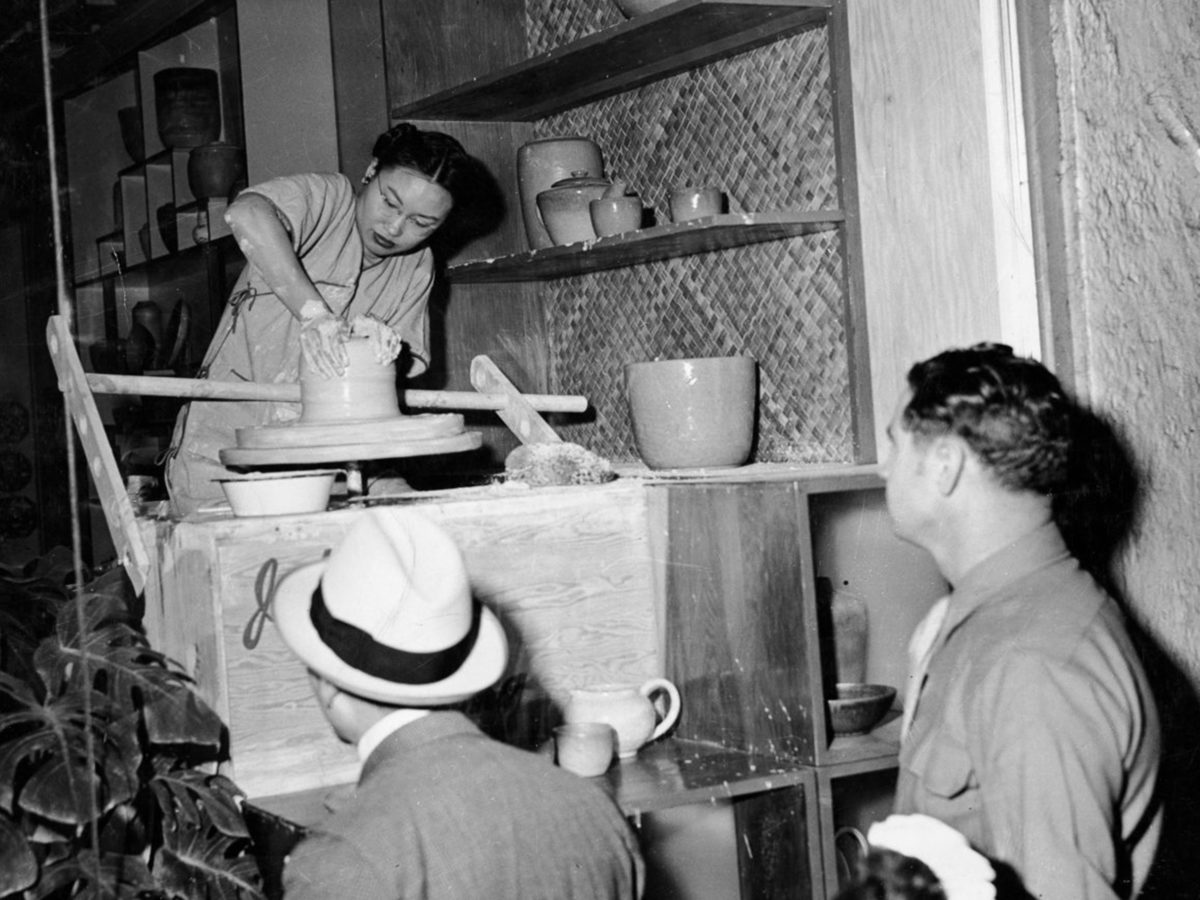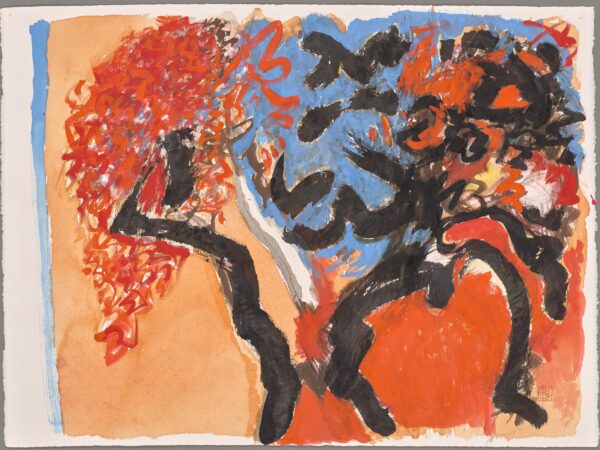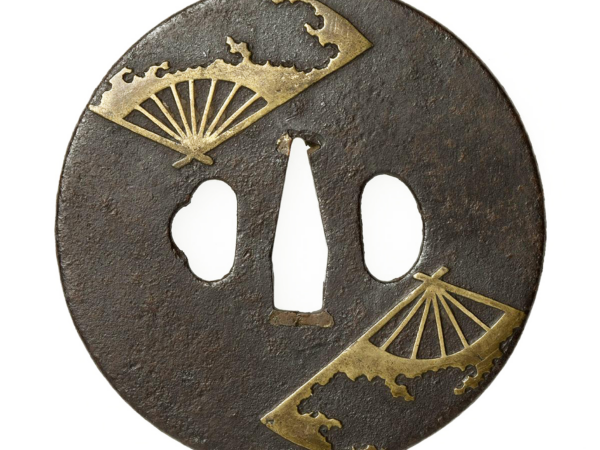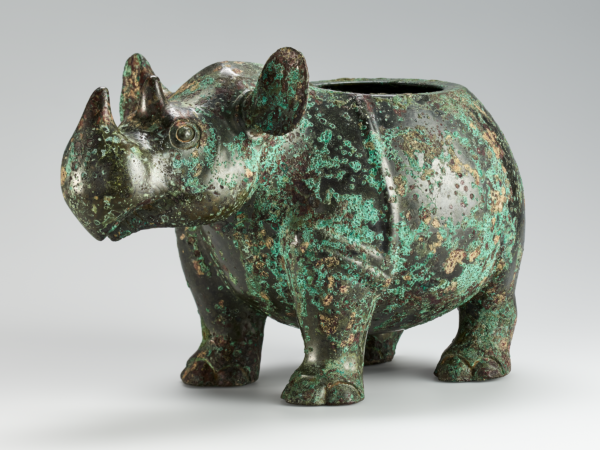Activity
Jade Snow Wong: Breaking the Mold
Objective: Students will 1) understand how Wong was viewed by her community as a rebel in her choice of career and in her artistic style; 2) practice using compare/contrast skills to identify the hallmarks of art from the Qing and Song dynasties, to understand how Wong’s work was initially judged; and 3) hone discussion skills through the use of Project Zero’s Artful Thinking Routines.

View images of Jade Snow Wong and of Chinese ewers from the Song and Qing dynasties.
Common Core State Standards
Visual Arts 1.0: Processing, Analyzing, and Responding to Sensory Information Through the Language and Skills Unique to the Visual Arts
Visual Arts 3.0: Understanding the Historical Contributions and Cultural Dimensions of the Visual Arts
Visual Arts 4.0: Responding to, Analyzing, and Making Judgments about Works in the Visual Arts
Visual Arts 5.0: Connecting and Applying What is Learned in the Visual Arts to Other Art Forms and Subject Area and to Careers
K-12.SL.1: Engage effectively in a range of collaborative discussions (one-on-one, in groups, and teacher-led) with diverse partners on grade appropriate topics and texts, building on others’ ideas and expressing their own clearly and persuasively.
Materials
Powerpoint of images: Jade Snow Wong working in the storefront window; Song vs. Qing ceramics, Jade Snow Wong’s ceramics (download PDF from sidebar above)
Handout with quotes about the start of Wong’s career and discussion prompts (for older students) (see below)
Post-its and pens/pencils
Part 1: Discussion of Wong’s Nonconformity
In her writing about the start of her artistic career, Wong recounts how she was unable to find an affordable rental space where she could make and sell her pottery. She ultimately struck a deal to work in the front window of a Chinatown store, a decision that helped her business to thrive but also drew her community’s disapproval.
*For younger students (K–5), the teacher can simply tell this brief story and show the image of Wong working in the window (Slide 2 of PowerPoint). Then, use the following Artful Thinking questions to encourage the students to share their responses to the picture:
- What do you see in this picture?
- What do think is happening this picture?
- What do you wonder about this picture?
After hearing a variety of responses, you can ask the students why working in the window might have been seen as a bold move on Wong’s part. What are the pros and cons of doing her work in public?
To wrap up the discussion, you can make a connection to today and how there is now much more interest in “maker spaces” and showing the process behind a product — can the students think of examples? (The proliferation of online how-to videos, open-kitchen restaurants where customers can see the chefs cooking, etc. If you’re interested in pursuing this topic, here is an article on the renewed arts and crafts movement: https://mymodernmet.com/arts-and-crafts-movement-revival/)
*For older students (Grades 6–8 and beyond), in addition to discussing the picture above, you can also have the students break up into small groups to read and discuss the quotes below:
“From the time I stepped into the window, I attracted crowds. I sold enough pottery to the general American public to convince that my style was acceptable. However, the Chinese community and my mother were not enthusiastic. With perpetually muddy hands, I had forsaken the 2500-year-old Confucian ideal of the scholar who studied to avoid getting his hands dirty. When I shopped for groceries, immigrant Chinese tradesmen laughed in my face. My mother would not look at me or at my work. Had I caused her to lose face in public?” (“Jade Snow Wong: A Retrospective,” 18)
“From the first, the local Chinese were not Jade Snow’s patrons. The thinness and whiteness of porcelains imported from China and ornate decorations which came into vogue during the late Ching [Qing] Dynasty satisfied their tastes. They could not understand why “silly Americans” paid dollars for a hand-thrown bowl utilizing crude California clays, not much different from the inexpensive peasant ware of China. That the Jade Snow Wong bowl went back to an older tradition of understated beauty was not apparent. They could see only that she wouldn’t apply a dragon or a hundred flowers.” (Jade Snow Wong, “No Chinese Stranger,” 22)
Notes:
- Even if the students haven’t yet studied Confucianism or Chinese history, they’ll be able to infer from the quotes the different cultural values that Wong was trying to reconcile.
- You might want to clarify that Wong’s simple pottery style “utilizing crude California clays” reflected her admiration of not just the older tradition of Song dynasty art but also of the early 20th century Arts and Crafts movement in America. The Chinatown community would not have been familiar with Wong’s approach, which was actually “new” for her time.
Possible Discussion Prompts:
- Given the first quote, what kind of career do you think Wong’s parents and community originally expected her to choose? What kind of work did the Chinese community respect?
- How did Wong’s pottery differ from the art the Chinese community valued? From the two quotes above, who were Wong’s main customers? How might this situation have caused tension for Wong?
- What does it mean to “lose face”? What risks was Wong taking in choosing this career and pursuing it in the way she did?
- What is more important, staying in harmony with your larger community or pursuing your own goals, which might conflict with those of the people you live with?
- Wong started her artistic career in a shop window because she couldn’t afford a studio space of her own. How is affordable space still an issue in the Bay Area today? How might artists be especially affected by this issue? (You might refer to the Oakland “Ghost Ship” fire in 2016 as a compelling example.)
Part 2: Connecting Wong’s Art to the Art of the Song vs. Qing Dynasties
*For younger students (K–5), the teacher can first introduce the Song (960–1279) and Qing (1644–1911) dynasties as two important periods in China’s past, each with its own style of art. You might want to clarify that while the Qing dynasty came later, that doesn’t mean its art was more “advanced” — while looking at the pieces in this slideshow, the goal is to draw out what artists in each era emphasized, rather than judging one style of art as “better” than the other.
*For older students, you can give dates and more background on the Song (960–1279) and Qing (1644–1911) dynasties, if you wish. Then show Slide 3 from the PowerPoint.
Give the students a few minutes to look at the two images. Then have each student think of two words, one that describes the Song ewer and one that describes the Qing ewer. Tell students to avoid using general words such as “good,” “bad,” or “better” — encourage them to dig into their vocabulary and think of descriptive adjectives/phrases. Older students can write their chosen words on post-its and stick each word on the board next to the relevant image.
- Share out. Ask students to share the words they thought of for one ewer and then the words for the other ewer. Or, if you used the post-its, you could simply read out the submitted words for each image and have the students take in the range of adjectives.
- Game. Show students the subsequent images in the slideshow (up through Slide 11) and have students guess whether each image shows a piece from the Song dynasty or the Qing dynasty.
Drawing Conclusions. Ask students to turn to a partner and work together to come up with a sentence that summarizes the overall differences in the art of the two eras. Have volunteers share out their sentence. Come to a consensus as a class as to how to identify a Song piece vs. a Qing piece.
- Connecting to Jade Snow Wong. Display images of Jade Snow Wong’s ceramics (the rest of the PowerPoint) to show how she was influenced by Song dynasty art. Older students who did the discussion portion of Part 1 will already know that she preferred the Song era, but for younger students, this is a chance for them to make the connection themselves.
*For K–5 students, ask, “From looking at these pictures of Jade Snow Wong’s art, which era do you think her work is closer to, the Qing or the Song? What similarities do you see?” Then explain to students how Jade Snow Wong’s community expected her to make art that looked more like the Qing era than the Song era, so she was a viewed as someone who didn’t do what she was “supposed to do.”
*For older students, you can pose the following question: Where do you see the Song influence on Wong’s art, and where do you see her putting her own stamp on that style? Ask for specific examples from the images in the slideshow.
- Wrap up. Question for all students: What personality traits did Jade Snow Wong need to have (or cultivate) to do the art she wanted to do?
For older students, you could assign this as a journal entry. Ideally, students would write about more than Wong’s artistic choices; also important are her efforts to start her business despite the cultural pressures she faced.
To help students make personal connections to Wong’s story, you could add the following question:
Have you ever thought of becoming an artist (whether in the visual arts, dance, writing, or music)? Why or why not?
Additional Resources
On the Song Dynasty:
Asian Art Museum. China: An Introduction to the Song Dynasty (960–1279)
https://education.asianart.org/resources/an-introduction-to-the-song-dynasty/
On the Qing Dynasty:
Asia Society. “Qing Dynasty Porcelain.” The Collection in Context. https://www.asiasocietymuseum.org/region_results.asp?RegionID=4&CountryID=12&ChapterID=32
Jade Snow Wong’s memoirs:
“Fifth Chinese Daughter.” New York: Harper & Brothers. 1950.
“No Chinese Stranger.” New York: Harper & Row. 1975.
You can also search the Asian Art Museum’s online collection for more images of Jade Snow Wong’s art as well as pieces from the Song and Qing dynasties. (For best results, click on the “Advanced Search” tab and enter “Jade Snow Wong” in the artist name feld.)
For more lessons based on Jade Snow Wong, visit the artist’s teacher packet.






